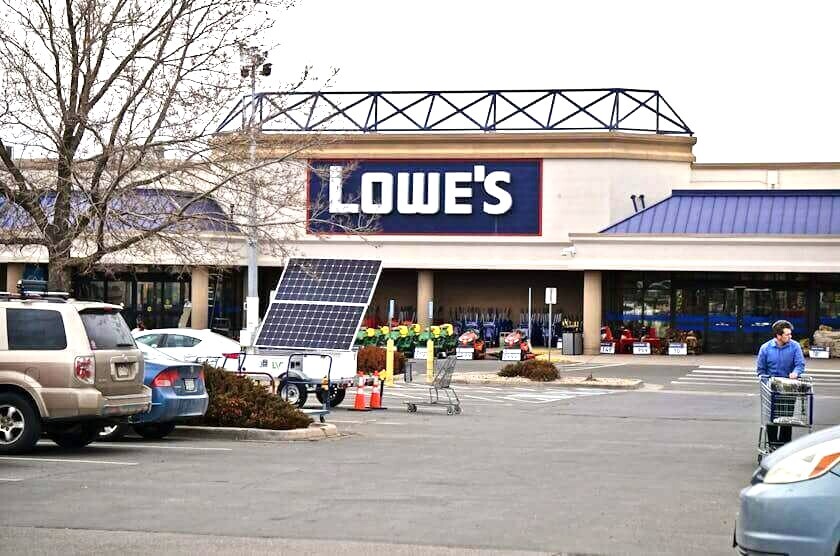Breaking Down A WALT In Simple Terms For New Investors
June 9th, 2025
5 min read

Weighted Average Lease Term (WALT) measures the average remaining lease duration for all tenants in a property, weighted by each tenant’s rent contribution. A high WALT signals longer-term income stability, while a low WALT points to upcoming lease expirations and possible turnover risk.
To gauge the stability of a retail property, few numbers tell the story better than the weighted average lease term (WALT).
If you’re new to commercial real estate investing, especially in retail centers and shopping malls, it might feel like there’s an endless list of numbers to track. You’ve probably heard about cap rates, NOI, occupancy, and square footage. But there’s one lesser-known metric that plays a big role in assessing the health and predictability of a retail property’s income stream. That metric is WALT.
WALT, or “Weighted Average Lease Term”, is the unsung hero of lease analytics. It doesn’t get flashy headlines, but behind the scenes, it’s doing the heavy lifting. It helps investors understand how much time is left on the existing leases in a property, with an extra emphasis on which tenants are contributing the most rent. The result is a clear picture of your income timeline, one that lenders, appraisers, and experienced investors take seriously.
In this article, we’ll break down what WALT really is, how it’s calculated, what it tells you (and what it doesn’t), and why it’s so important for shopping center investments. We’ll also share real-world examples, comparisons, and metaphors that make WALT easy to understand, even if you’re just starting out.
Defining WALT: The Lease Lifespan Thermometer
WALT (Weighted Average Lease Term) indicates the average amount of time left on all current tenant leases in a property, with the calculation weighted by each tenant’s share of the total rent. This means that larger tenants, who contribute a greater share of the overall rent, have a more significant impact on the final figure.
Think of a shopping center like a hotel. Some guests are staying for one night, while others are waiting for a month. If you wanted to estimate how long your “hotel” will stay full based on the bookings you already have, you wouldn’t just average the stay lengths. You’d pay more attention to the guests in the penthouse suites who are spending the most. That’s exactly what WALT does.
The higher the WALT, the longer your rent roll is secured. It gives investors a reliable measure of lease duration and income stability.
The Role of WALT In Shopping Centers And Malls
For shopping center owners, WALT is more than just a financial metric; it serves as a strategic guide. A property with a high WALT provides landlords with breathing room, allowing them to concentrate on long-term improvements, such as upgrading amenities or repositioning the tenant mix, without the immediate concern of lease expirations disrupting their income.
A short WALT indicates upcoming lease activity that needs attention. While it may raise turnover risks, it also offers opportunities to increase income by re-letting at higher market rates or attracting stronger tenants. Thus, a low WALT can be a catalyst for value creation.
WALT also plays a role in timing major financial decisions such as refinancing or selling. Properties with longer lease terms often qualify for better loan terms and receive more favorable valuations.
For investors, this means high WALT periods may be ideal for capital events. When lease terms are short, it can be more effective to stabilize the rent roll first before pursuing financing or a sale, ensuring the property presents a stronger financial profile.
A Closer Look: How To Calculate WALT
Let’s walk through a simple example to make this concrete.
Suppose you own a neighborhood shopping center with three tenants:
- Starbucks pays $100,000 in annual rent and has 8 years remaining on its lease.
- A local boutique pays $40,000 and has 2 years left.
- A gym pays $60,000 and has 5 years remaining on its lease.
First, calculate each tenant’s share of the total rent:
- Starbucks: 100,000 ÷ 200,000 = 0.50 (50 percent)
- Boutique: 40,000 ÷ 200,000 = 0.20 (20 percent)
- Gym: 60,000 ÷ 200,000 = 0.30 (30 percent)
Now, multiply each lease term by the tenant’s rent share:
- Starbucks: 8 × 0.50 = 4.0
- Boutique: 2 × 0.20 = 0.4
- Gym: 5 × 0.30 = 1.5
Add them up:
WALT = 4.0 + 0.4 + 1.5 = 5.9 years
So your WALT is 5.9 years. That’s almost six years of weighted lease security, which is excellent for income predictability.
High vs. Low WALT: What The Numbers Tell You
WALT is not just a standalone figure. It tells a story about lease duration and investment stability. But there’s no single “ideal” WALT. The best range depends on your investment strategy.
What A High WALT Tells You
A high WALT (for example, 7 to 10 years) suggests long-term leases with established tenants. This is attractive if you’re focused on passive income and a long-term hold strategy. However, it may also mean less flexibility. If rents in the area are rising, you could be locked into below-market rates.
What A Low WALT Tells You
A low WALT (such as under 3 years) indicates upcoming lease expirations. That may sound risky, but for active investors looking to reposition a center, re-lease to stronger tenants, or raise rents, it presents a valuable opportunity.
In short, a high WALT means more stability, while a low WALT may offer greater upside if managed correctly.
Metaphor Time: WALT As A Music Festival
Imagine your shopping center is a music festival. Each performer (tenant) has a different time slot, and some draw bigger crowds (pay more rent). You’re trying to estimate how much longer the show will go on, and the biggest acts influence that timeline the most.
A high WALT means your headliners are just getting started, and they’re scheduled to perform for years. A low WALT means the main acts are about to leave the stage, and you’ll need to find new performers soon. WALT lets you prepare for the encore or start planning the next big lineup.
What WALT Does Not Tell You
While WALT is incredibly useful, it has its limitations.
WALT does not tell you who your tenants are or whether they’re financially healthy. A 10-year lease with a struggling local business may carry more risk than a 3-year lease with a strong national brand. Always review tenant credit quality separately.
WALT also doesn’t account for early termination clauses, co-tenancy provisions, or percentage rent arrangements. These elements, which are found in individual leases, can impact income or lease length in ways not reflected in the WALT calculation.
Think of WALT as your altitude reading in a plane. It gives you important data, but you still need to check other instruments to make informed decisions.
Why WALT Matters For Investors
As a new investor in commercial real estate, understanding WALT gives you an advantage. It simplifies lease analysis by providing a single number that reflects your lease timeline and income security.
You don’t need to memorize every lease clause or decode pages of legal language. WALT gives you a high-level view that’s easy to understand and incredibly useful for comparing properties, planning cash flow, or preparing for refinancing.
Whether you’re buying your first retail property or managing a small portfolio, WALT is a dependable tool that helps you make smarter, more confident decisions.
WALT Provides A Glimpse Into A Property's Future
In commercial real estate, you're investing in time as much as in physical structures. Lease time affects income stability, refinancing, and long-term value. WALT reveals how much lease time is secured versus what will need attention soon. It's a key indicator of a property's lease health, helping to determine if your investment is stable or nearing a transition.
If you find this concept valuable and want to expand your commercial real estate knowledge, consider looking into key topics and complement WALT. A great place to explore these topics and more is the RockStep Capital Learning Center, which offers a wealth of free resources, including articles, eBooks, podcasts, and YouTube videos. Learning to analyse a shopping center, understanding triple-net leases, and knowing how cap rates affect pricing are essential for solid investment.
These concepts, when combined, enhance your understanding of risk and opportunity in retail property investing. As you refine your skills, you'll find yourself revisiting WALT to gain deeper insights into its impact on a property's future.
Topics:


























